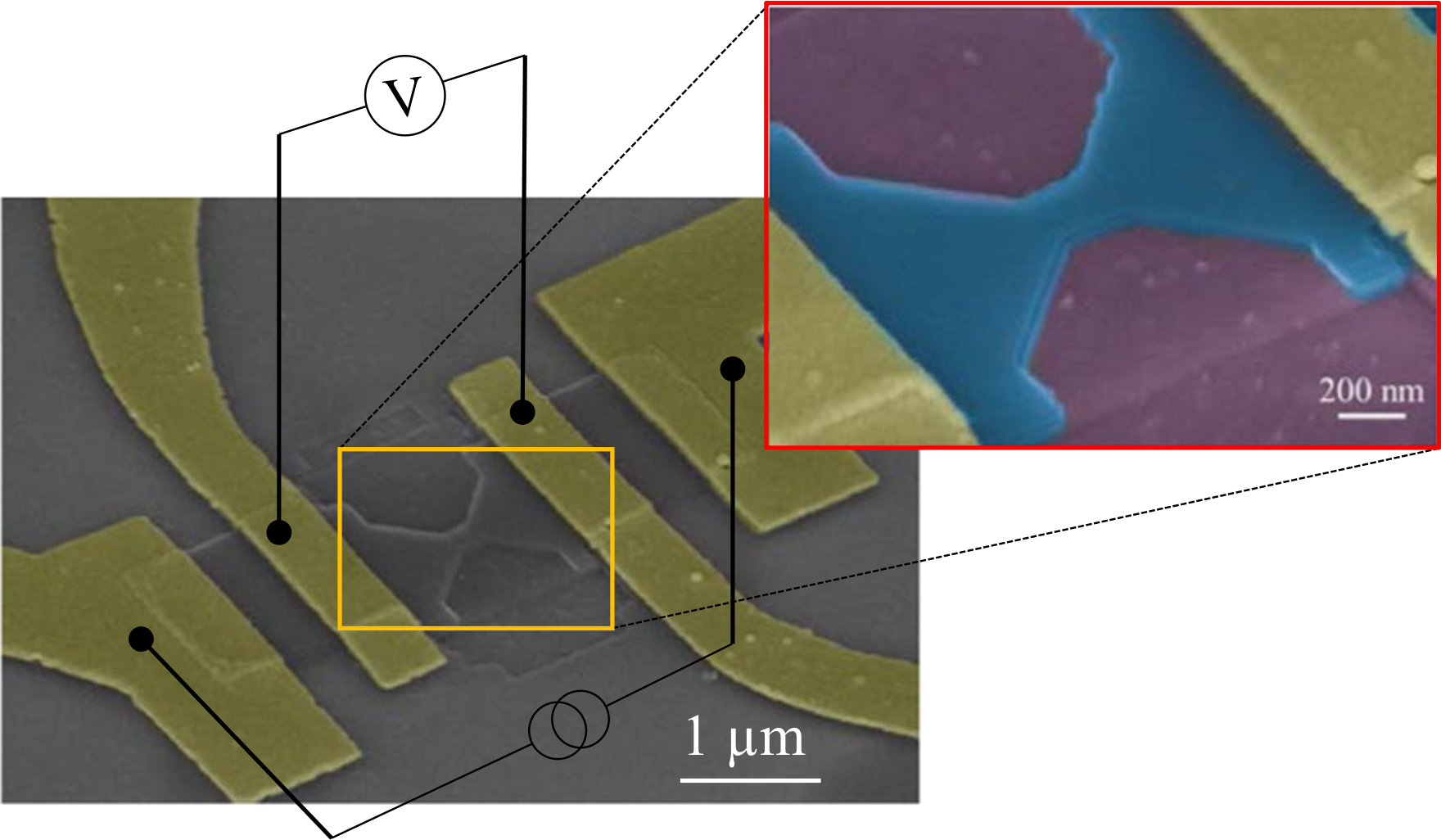Nanostructures

Over the last decades, artificial nanostructures grown with atomic-scale precision have become the cutting edge of materials physics. One of their salient features is the posibility of restricting the motion of the electrons to two, one or zero dimensions.
Feature papers
2021
Fast response photogating in monolayer MoS2 phototransistors
D. Vaquero, V. Clericò, J. Salvador-Sánchez, E. Díaz, F. Domínguez-Adame, L. Chico, Y. M. Meziani, E. Diez and J. Quereda
Nanoscale 13, 16156 (2021)
We investigate the photoresponse of a fully h-BN encapsulated monolayer MoS2 phototransistor. In contrast with previous understanding, we identify a rapidly-responding photogating effect mechanism that becomes the dominant contribution to photoresponse under high-frequency light modulation. Using a Hornbeck–Haynes model for the photocarrier dynamics, we fit the illumination power dependence of this photogating effect and estimate the energy level of the involved traps. The resulting energies are compatible with shallow traps in MoS2 caused by the presence of sulfur vacancies.
Spin filtering induced by a magnetic insulator stripe on graphene
2020
Excitons, trions and Rydberg states in monolayer MoS2 revealed by ...
D. Vaquero, V. Clericò, J. Salvador-Sánchez, A. Martín-Ramos, F. Domínguez-Adame, Y. M. Meziani, E. Diez and J. Quereda
Communications Physics 33, 194 (2020)
Exciton physics in two-dimensional semiconductors are typically studied by photoluminescence spectroscopy. However, this technique does not allow for direct observation of non-radiating excitonic transitions. Here, we use low-temperature photocurrent spectroscopy as an alternative technique to investigate excitonic transitions in a high-quality monolayer MoS2 phototransistor. The resulting spectra presents excitonic peaks with linewidths as low as 8 meV. We identify spectral features corresponding to the ground states of neutral excitons (XA1s and XB1s) and charged trions (TA and TB) as well as up to eight additional spectral lines at energies above the XB1s transition, which we attribute to the Rydberg series of excited states of XA and XB. The intensities of the spectral features can be tuned by the gate and drain-source voltages. Using an effective-mass theory for excitons in two-dimensional systems we are able to accurately fit the measured spectral lines and unambiguously associate them with their corresponding Rydberg states.
Tuning the thermoelectric reponse of silicene nanoribbons with vacancies
2019
Impact of device geometry on electron and phonon transport in graphene nanorings
M. Saiz-Bretín, L. Medrano Sandonas, R. Gutierrez, G. Cuniberti and F. Domínguez-Adame
Physical Review B 99, 165428 (2019)
Recent progress in nanostructuring of materials opens up possibilities to achieve more efficient thermoelectric devices. Nanofilms, nanowires, and nanorings may show increased phonon scattering while keeping good electron transport, two of the basic ingredients for designing more efficient thermoelectric systems. Here we argue that graphene nanorings attached to two leads meet these two requirements. Using a density-functional parametrized tight-binding method combined with Green's function technique, we show that the lattice thermal conductance is largely reduced as compared to that of graphene nanoribbons. At the same time, numerical calculations based on the quantum transmission boundary method, combined with an effective transfer matrix method, predict that the electric properties are not considerably deteriorated, leading to an overall remarkable thermoelectric efficiency. We conclude that graphene nanorings can be regarded as promising candidates for nanoscale thermoelectric devices.
Nanowires: A route to efficient thermoelectric devices
2018
Topologically protected states in δ-doped junctions with band inversion
A. Díaz-Fernández, N. del Valle, E. Díaz and F. Domínguez-Adame
Physical Review B98, 085424 (2021)
A topological boundary can be formed at the interface between a trivial and a topological insulator. The difference in the topological index across the junction leads to robust gapless surface states. Optical studies of these states are scarce in the literature, the reason being the difficulty in isolating their response from that of the bulk. In this work, we propose to deposit a δ layer of donor impurities in close proximity to a topological boundary to help in detecting gapless surface states. As we will show, gapless surface states are robust against this perturbation and they enhance intraband optical transitions as measured by the oscillator strength. These results help us to understand the interplay of surface and bulk states in topological insulators.
Quantized electron transport through graphene nanoconstrictions